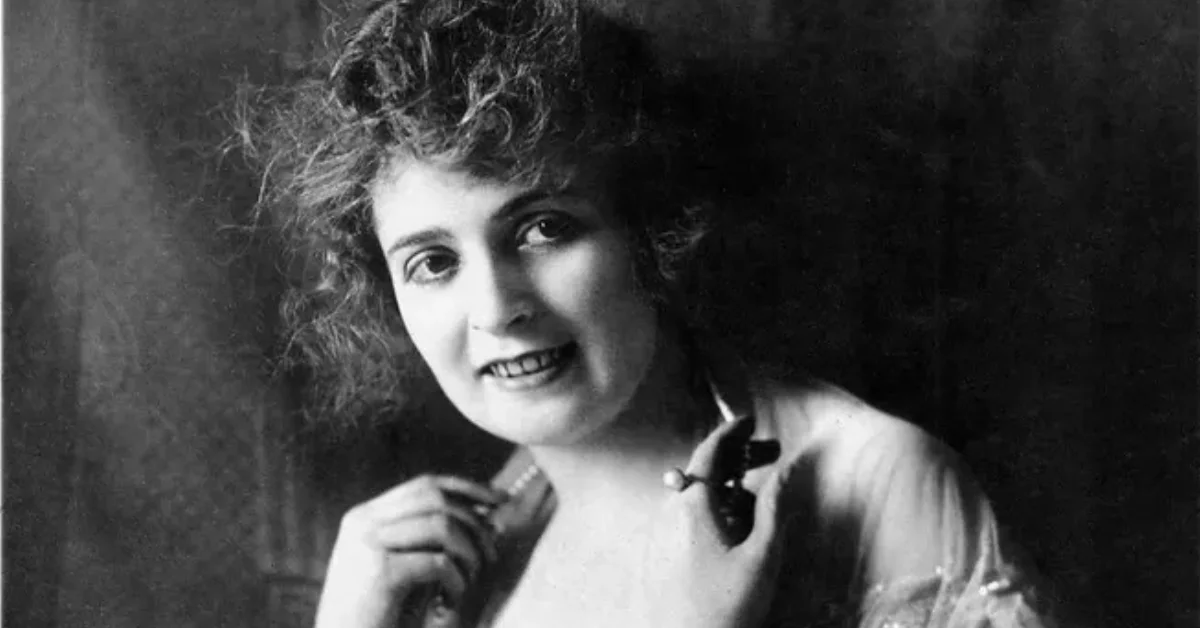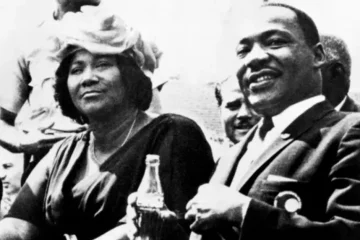In the golden annals of Hollywood’s history, few names shine as brightly as that of Myrtle Gonzalez, an enchanting silent film actress who left an indelible mark on the early film industry. Born on September 28, 1891, in the vibrant city of Los Angeles, Myrtle’s journey from a young dreamer to a luminary of the silver screen is a captivating tale. As a luminary of the silent movie era, she not only graced the screens with her beauty but also played a pivotal role in shaping the burgeoning film industry during the Hollywood Golden Age.
Myrtle Gonzalez’s significance in the silent film era is akin to a beacon illuminating the path of cinematic evolution. As a trailblazer in the early Hollywood star scene, her legacy extends beyond her filmography. Her story is not merely about entertainment but about resilience, passion, and an unwavering commitment to the art of storytelling. This blog post delves into the life of Myrtle Gonzalez, exploring the milestones that defined her career, her iconic contributions to silent cinema, and the enduring impact she has left on Hollywood’s rich tapestry.
Early Life and Entry into Acting
Myrtle’s background was a canvas painted with the hues of Los Angeles, a city that was on the brink of becoming the entertainment capital of the world. Raised in an environment pulsating with the nascent energy of the American film industry, Myrtle Gonzalez’s destiny seemed preordained. The allure of the silver screen beckoned her from an early age, and she embarked on a journey that would shape the course of her life.
Her entry into the film industry was not just a career choice; it was a destiny fulfilled. In a time when Hollywood’s early years were marked by innovation and experimentation, Myrtle found her place among the pioneers of the cinematic frontier. Her initial roles and experiences were stepping stones, each contributing to the evolution of a star in the making. The silent film era had found a rising luminary in Myrtle Gonzalez, and the world was about to witness the unfolding of a captivating story that would leave an indelible mark on cinematic history.
Rise to Stardom
As the silent film era unfolded its cinematic tapestry, Myrtle Gonzalez emerged as a luminary with breakthrough roles that captivated audiences and critics alike. Her on-screen charisma and exceptional talent propelled her into the spotlight, solidifying her status as an early Hollywood star. The allure of her performances in notable films such as The White Pearl and Civilization became synonymous with the glamour and magnetism of the golden age of cinema.
Her rise to stardom wasn’t merely about gaining recognition; it was a journey marked by the genuine connection she forged with audiences. Myrtle’s performances were not just portrayals; they were windows into the human experience, resonating with the hearts of viewers across the nation. The acclaim she received was a testament to her unparalleled ability to bring characters to life, making her an icon of the silent movie era.
The Easiest Way (1917) and Other Major Works
Among the gems of Myrtle Gonzalez’s filmography, The Easiest Way (1917) stands as a cinematic masterpiece that deserves a closer look. The film, directed by Jack Conway, not only showcased Myrtle’s acting prowess but also delved into societal nuances, making it a poignant reflection of its time.
“The Easiest Way” is a compelling exploration of morality and societal expectations, featuring Myrtle Gonzalez in a role that transcends the screen. As the narrative unfolds, the audience is taken on a journey through the complexities of human relationships, with Myrtle’s portrayal adding layers of authenticity to the storyline. The film’s critical acclaim and audience reception underscore Myrtle’s ability to navigate the intricate nuances of her characters, establishing her as a versatile actress.
Beyond The Easiest Way, Myrtle’s filmography is a treasure trove of cinematic gems. From her captivating performances in The White Pearl to the societal commentary of Civilization, each film contributed to her legacy as a silent film actress. The resonance of these works persists, showcasing Myrtle Gonzalez’s enduring impact on the cinematic landscape of her time.
Myrtle Gonzalez’s Impact on Hollywood
Myrtle Gonzalez’s contribution to the development of early Hollywood extends beyond the frames of her films. As one of the influential figures in the silent film era, she played a crucial role in shaping the trajectory of American cinema. Her influence reached far beyond the screen, leaving an indelible mark on the artistic and cultural landscape of Hollywood’s formative years.
As a trailblazer, Myrtle Gonzalez paved the way for future generations of actors and actresses, proving that talent and dedication could transcend the limitations of the silent movie era. Her impact resonated not only with audiences but also with peers who looked up to her as a beacon of inspiration. In the tapestry of Hollywood’s early years, Myrtle Gonzalez’s name is woven alongside other luminaries, creating a legacy that continues to echo through the corridors of cinematic history.
Personal Life and Tragic End
Beyond the glitz and glamour of Hollywood, Myrtle Gonzalez’s personal life was a canvas marked by both joy and tragedy. Insights into her upbringing and personal experiences shed light on the woman behind the silver screen persona. Myrtle’s journey mirrored the complexities of the characters she portrayed, adding a layer of relatability that endeared her to audiences.
The impact of the 1918 influenza pandemic cast a dark shadow over Hollywood, claiming the life of one of its brightest stars. Myrtle Gonzalez’s untimely death at the age of 27 was a tragic chapter in the annals of film history. The circumstances leading to her demise were a stark reminder of the fragility of life, transcending the reel world she inhabited. The silent film industry mourned the loss of a talent taken too soon, and Hollywood was left to grapple with the void left by one of its promising stars.
Hollywood During the Silent Era
The silent movie era was a pivotal period in Hollywood’s evolution, marked by innovation, experimentation, and the birth of cinematic storytelling. As we delve into the overview of this transformative era, we uncover the key players and influencers who defined Hollywood’s early years.
The silent film era, spanning roughly from the late 19th century to the early 1930s, laid the foundation for the language of cinema. It was a time when filmmakers embraced the power of visual storytelling, relying on the nuances of facial expressions, body language, and captivating visuals to convey narratives. Myrtle Gonzalez, amidst this cinematic renaissance, emerged as a luminary, contributing to the tapestry of storytelling in a medium that was still finding its voice.
Key players and influencers during this era were not only actors and actresses but also directors, producers, and visionaries who shaped the industry. Myrtle’s role in shaping Hollywood’s early years went beyond her performances; she became a symbol of the artistic possibilities inherent in silent cinema. As Hollywood embraced its identity as the entertainment capital of the world, Myrtle Gonzalez stood at the forefront, a silent film star whose influence echoed through the corridors of Tinseltown.
Remembering Myrtle Gonzalez
Commemorations and tributes to Myrtle Gonzalez stand as testaments to the lasting impact of her cinematic legacy. The preservation of her contributions to silent cinema is not merely an exercise in nostalgia but a recognition of the enduring relevance of her work. As we explore the various ways in which Myrtle Gonzalez is remembered, from tributes in Hollywood to academic discussions, her cinematic legacy continues to captivate hearts.
Commemorations take many forms, from film festivals celebrating the silent movie era to retrospectives that honor Myrtle’s specific contributions. The preservation of her cinematic legacy goes beyond the physical reels of film; it lives on in the hearts of film enthusiasts and scholars who continue to explore and appreciate the magic she brought to the screen.
Myrtle Gonzalez’s continued relevance in contemporary discussions is a testament to the timelessness of her performances. In an age where technology has transformed the landscape of filmmaking, the allure of silent cinema, and the luminaries who graced its screens, remains palpable. As discussions on Hollywood’s history evolve, Myrtle Gonzalez occupies a hallowed space, a reminder of the pioneers who laid the groundwork for the cinematic extravaganzas of today.
Myrtle Gonzalez Net Worth
Determining the precise net worth of Myrtle Gonzalez poses a challenge, given the limited financial records available from the silent film era. Nevertheless, we can approximate her net worth by considering factors such as her salary, popularity, and lifestyle.
During the zenith of her career, Myrtle Gonzalez was reportedly earning about $500 per week, a substantial sum in the early 1910s. She also accrued bonuses and royalties from her film ventures, in addition to income from endorsement deals and other sources.
Gonzalez led a luxurious life, possessing multiple residences and automobiles, while also indulging in expenditures on jewelry, clothing, and travel.
Taking into account both her earnings and expenditures, it is estimated that Myrtle Gonzalez’s net worth likely ranged between $100,000 and $250,000 at the time of her demise in 1918. This would equate to approximately $1.5 million to $3.75 million in today’s dollars, adjusted for inflation.
It is crucial to acknowledge that this is merely an estimation, and the actual figure could vary. Nonetheless, it provides a general overview of Myrtle Gonzalez’s financial status during her career.
Conclusion
In the final act of this cinematic exploration, we recap the illustrious career of Myrtle Gonzalez and the profound impact she left on the world of film. Her journey from the bustling streets of Los Angeles to the silver screens of early Hollywood is a narrative of passion, talent, and the timeless allure of storytelling. As we bid farewell to the pages of this blog post, a sense of gratitude and admiration lingers for a silent film star who, though gone, remains eternally present in the frames of cinematic history.
Myrtle Gonzalez’s career and impact serve as a testament to the transformative power of cinema. Her significance in film history goes beyond the roles she played; it is a celebration of an era that laid the foundation for the cinematic extravaganzas we enjoy today. In the final thoughts on her significance, we acknowledge Myrtle Gonzalez not only as a silent film actress but as an immortal icon who, with every frame, contributed to the magic of Hollywood’s golden age.
You May Also Like: Jenna Aze: All You Need to Know About this Rising Star



